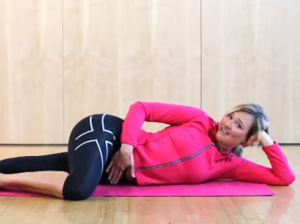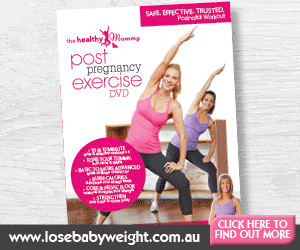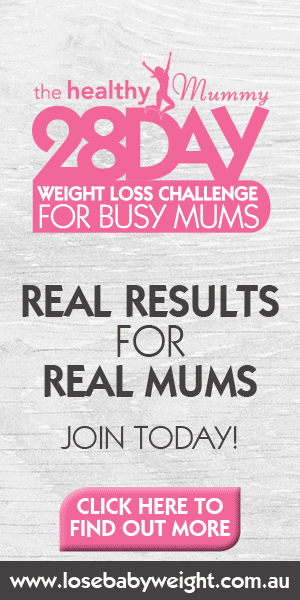
Remember Kegel exercises in the late 80s and 90s? They were all the rage and then they suddenly went the way of Jane Fonda videos. I think that’s because talking about the pelvic floor makes people a little uncomfortable. Quite often I hear clients say “Pilates instructors talk about the pelvic floor so much”.
Unfortunately, lots of people just don’t understand how important pelvic floor exercises are. Understanding how to lift up on your pelvic floor is crucial to regaining a functionally strong core… So much ado about something so innocuous that we don’t really think about it on a daily basis.
What’s more, we associate it with weeing and a lot of instructors use the analogy of “holding it midstream” to teach people how to activate it.
If you’ve read this far and haven’t clicked away yet – well done.
 Your pelvic floor – the FACTS
Your pelvic floor – the FACTS
Welcome to your pelvic floor, a fascinating sling of muscle, ligaments and so on that goes from your pubic bone all the way back towards your tailbone. It’s not a muscle we think about much unless if something goes wrong (or we’re Pilates instructors!). Because it is an involuntary stabilising muscle, we can trigger it with exercises like trampolining and there’s even evidence vibration platforms can help tone it. But, after pregnancy, the tissues and muscles may have stretched and weakened to an extent that you will need to take it quite slowly to strengthen again.
You may be affected by postnatal incontinence – accidentally weeing your pants a little (and not with laughter) when you sneeze or cough. The culprit to blame is an overstretched pelvic floor quite literally worn out by the weight of your baby bearing down on it.
How to strengthen your pelvic floor
So what do you do to strengthen your pelvic floor and when do you start? Ideally, you should start with exercises before you give birth. A functionally strong pelvic floor will help you support your pregnancy and assist your other core muscles to promote better posture and less strain. But, once again, less is more. You want a well trained pelvic floor that you can also relax when needed, i.e. when your baby wants to push through. If you’ve already had your baby, the good news is, you can start anytime – provided you haven’t had doctor’s orders not to exercise.
Let’s get your started. First of all, you need to become aware of what it feels like to lift up (rather than bear down) on your pelvic floor. A really great but simple exercise is the hip hover and the single leg lift (see both of the below videos – which also work your core and legs).
Important points to bear in mind are to not get a feeling of “pushing down” = bearing down on the pelvic floor rather than lifting, “bracing your core” = activates the more dominant rectus abdominus, “clenching your buttocks” = activating your gluts rather than pelvic floor.
How to test for muscle separation
Your core is more than just the six pack muscle we quite often refer to when we say someone has a ripped core.
In fact, this is the most superficial and perhaps least important muscle to strengthen when you’re looking to get a more functional core, cinch your waist in and tone up or let your separated abs heal. (it’s also the muscle that separates – which is why doing sit-ups until the cows come home to help you lose your baby weight would be a terrible idea and make your rectus abdominus bulge and it could separate even more and is why you should avoid crunches and standard Pilates 100′s).
You should examine yourself to find out what degree of muscle separation you have experienced before undertaking any post partum-exercise (needs to be under 2cm) or receive clearance from your Doctor.
How to examine yourself
Step 1 – In a lying position with knees bent, place your right hand behind your head.
Step 2 – With your left hand position your index finger and middle finger together and place them horizontally in the centreline of your stomach between your abdominals.
Step 3 – From this position slowly raise your head slightly off the floor using your right hand (positioned behind your head) for support. Make sure not to simply lift your head with your hand as this is a comman error – you must perform one basic crunch to fully contract your abdominal muscles to get the best assessment of your separation.
Step 4 – Your abdominals will now be slightly contracting allowing you to see exactly how far your abdominals have separated.
Step 5 – If your index finger and middle finger (on your left hand) can still fit between your abdominals you will have Diastasis Recti of between 2 – 2.5cms. For every additional finger you can place inbetween your abdominals you should add 1cm extra to your total abdominal separation number. If you can only fit one finger between your abdominals you effectively have 1cm of separation and will be nearly healed.
If you discover you have more than a 1 – 2cm separation you should refrain from doing exercises such as crunches, sit-ups or pilates 100′s all of which can put too much pressure on the abdominal muscles which have become separated during pregnancy.
[pb_vidembed title=”Pelvic Floor & Core Strengthening Exercise – Single Leg Lift” caption=”” url=”http://www.youtube.com/watch?v=ix5h6zAUTNs” type=”yt” w=”520″ h=”415″]
[pb_vidembed title=”Pelvic Floor & Core Strengthening Exercise -The Hip Hover” caption=”” url=”http://www.youtube.com/watch?v=VU6gLzqhUB0″ type=”yt” w=”520″ h=”415″]
An added benefit of a strong pelvic floor is that you’ll also be more likely to orgasm during sex. Just be careful though – more babies could be on the way soon, if you practice your pelvic floor exercises too much.
Stay tuned for next weeks post and video on the stomach and core – the complex routine that needs to be followed to regain your tummy plus specific exercises and the journey to getting your tummy back.
To see Sol’s past articles and videos click here
Get Our Exercise DVD

The DVD can be followed by all mums (for example new mums or mums with older children) and can be followed by someone with a basic or a more advanced level of fitness.
Lisa Westlake is our incredible fitness instructor and postnatal exercise specialist throughout the DVD. With her extensive physiotherapy experience and qualifications (Lisa is one of the most awarded fitness professionals in Australia), Lisa is the perfect fitness instructor to bring The Healthy Mummy Post Pregnancy Exercise DVD to life – you will love working out with her. (You can see our Q&A with Lisa with commonly asked questions on the DVD here)
The exercises in The Healthy Mummy Post Pregnancy Exercise DVD are effective and safe and Lisa will guide you through each of the workouts. As well as assisting in the improvement of your overall fitness levels, the workouts in the DVD will also help in the burning of calories, the improvement of your core strength and the strengthening of your pelvic floor.
The six workouts are broken down into 10 and 15 minute sections that you can do when it suits you – or if you have the time and energy you can do the DVD as one 70 minute continuous workout. The Healthy Mummy Post Pregnancy Exercise DVD also covers special considerations post-birth, such as caesarean sections, back strains, muscle separation, incontinence and pelvic floor issues.
[pb_vidembed title=”The Post Pregnancy Exercise DVD” caption=”” url=”http://vimeo.com/73423922″ type=”vem” w=”600″ h=”450″]

